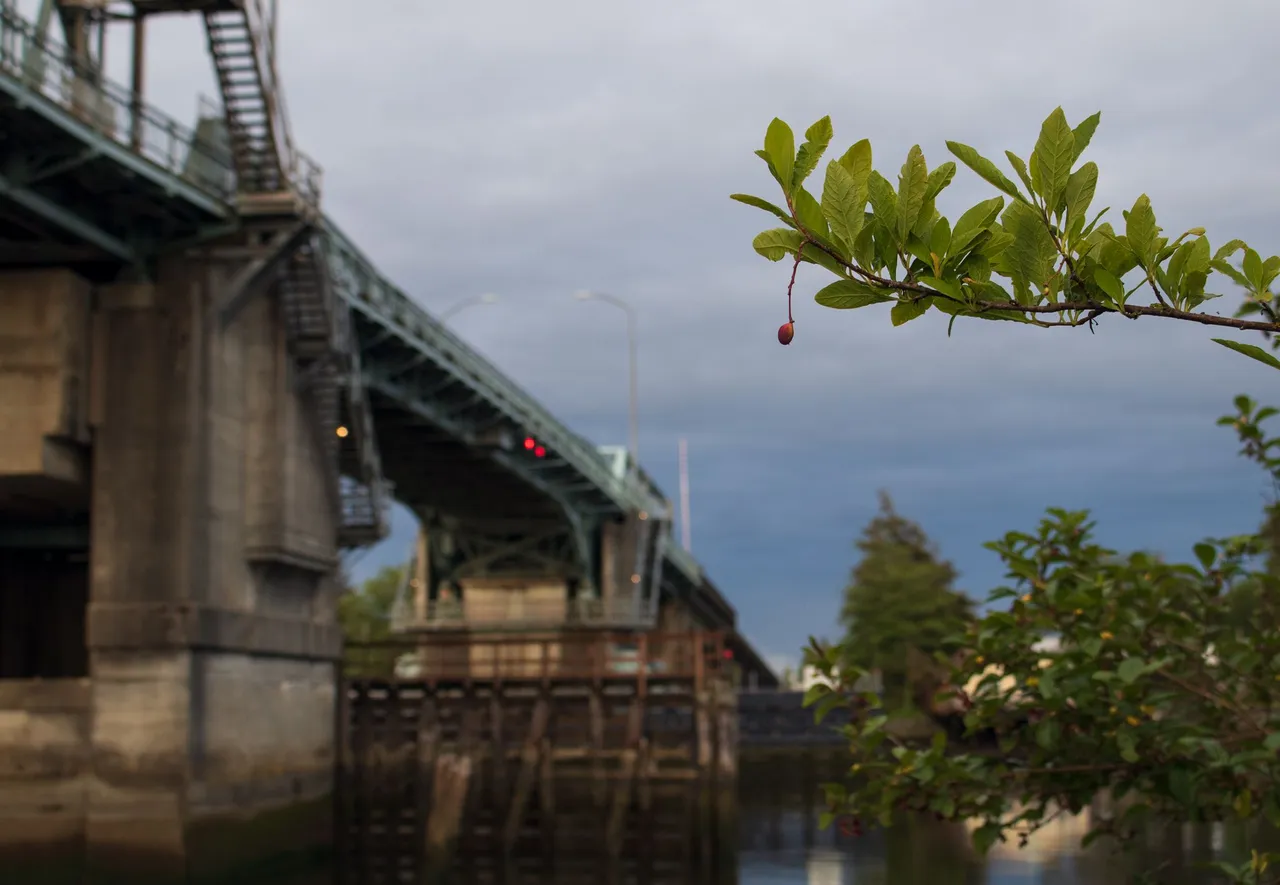Lately my photography outings have taken me to the same section of the Hoquiam River in my hometown of Hoquiam, Wash.
Hoquiam offers a distinct advantage to a beginning landscape photographer like myself: there are numerous scenic locales within walking distance, so I can practice by returning to the same settings and taking another crack at the scene – either making an adjustment based on what I learned in the processing stage, or just updating a shot I took in the past by utilizing what I learned about photography in the interim.
Of course, the landscape on the river does not remain static: in this first photo (all these shots were taken on an evening photowalk at the end of May), the limbs you see are from a tree that had blown down since the last time I photographed our Simpson Avenue Bridge. And the goose wasn't posed there like an explorer surveying the far shore.
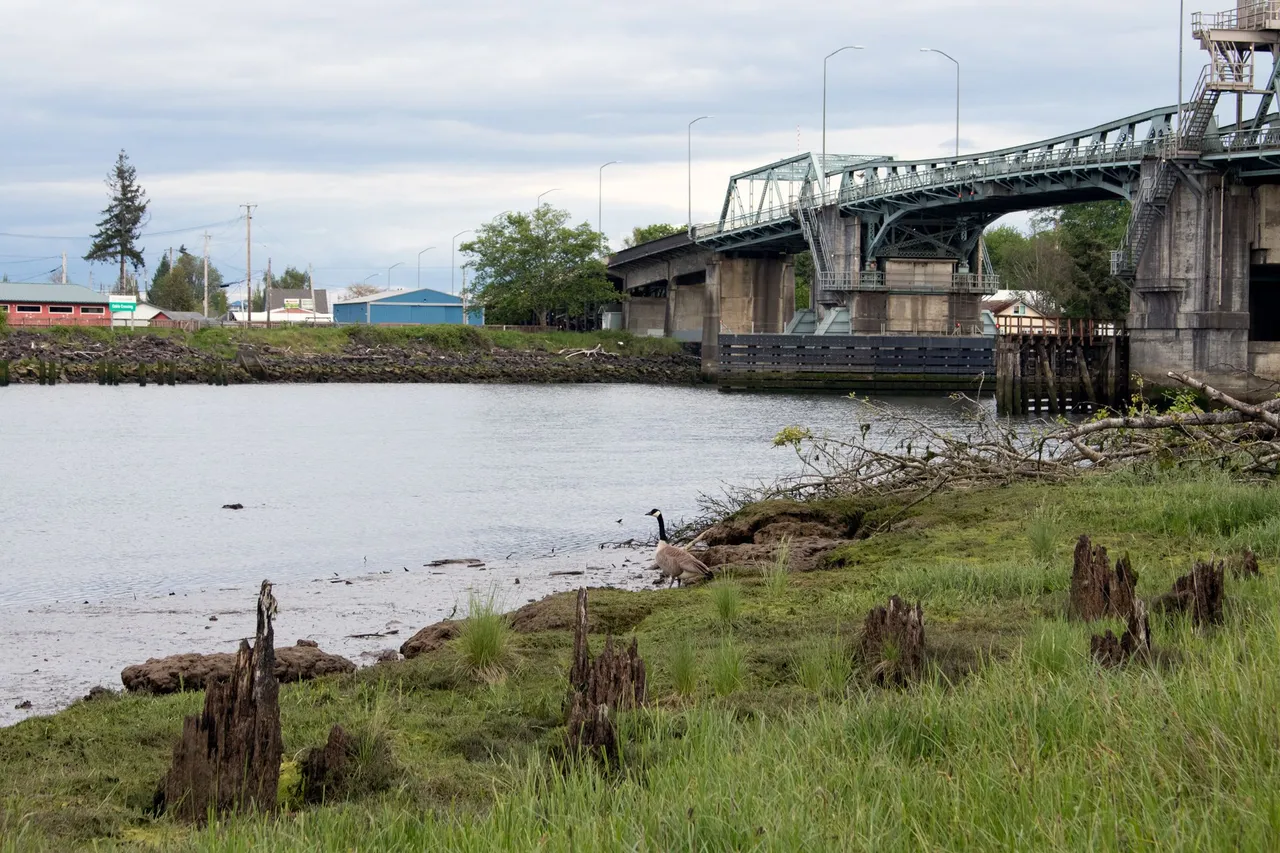
It was honking away at something I never identified. Perhaps just calling to the gathering evening.
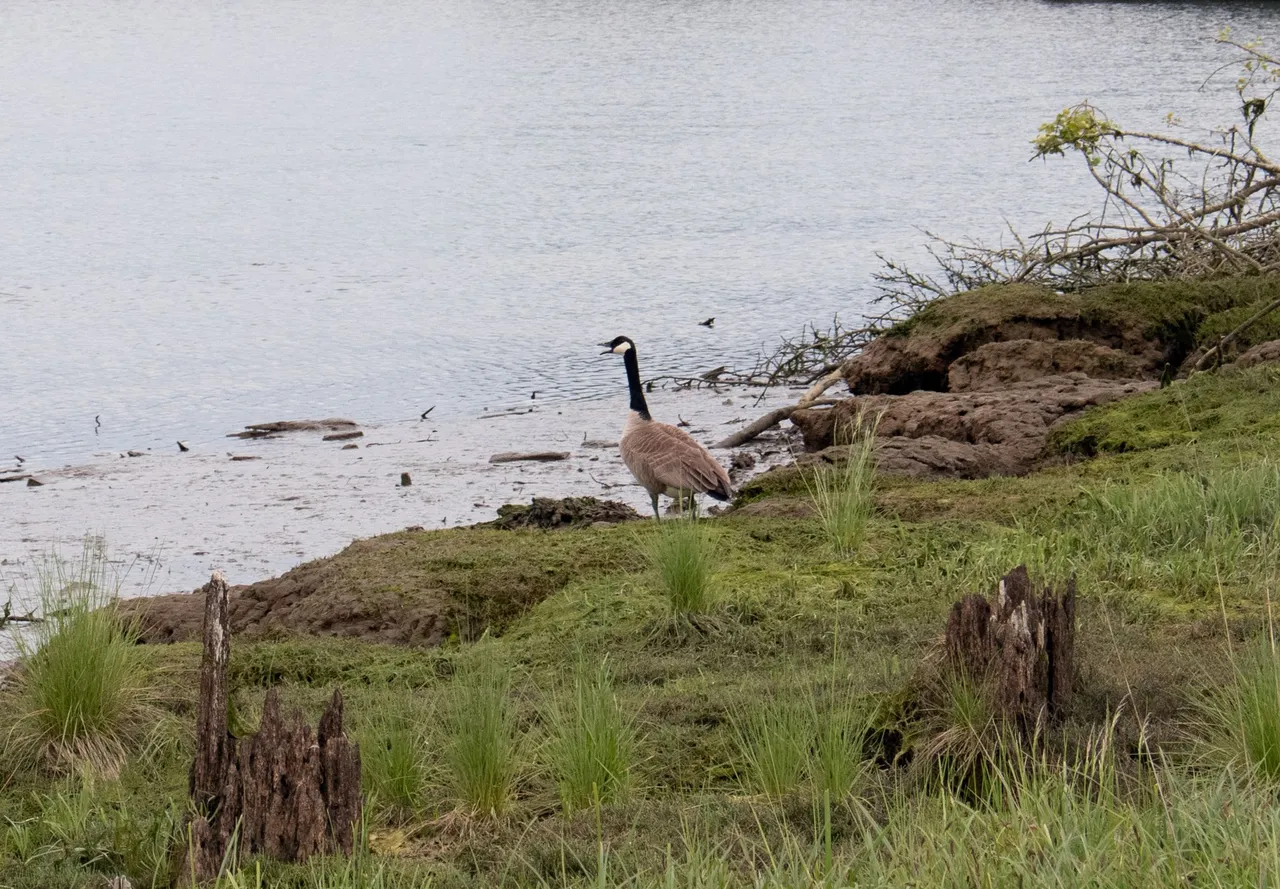
The photograph below was composed over time, by adding new details alongside features of the scene I had noticed on previous trips.
The last time I photographed the bridge from this location, I was interested in the trees on the far shore, and the way they stood out against the horizon. This time I included the trees, but also noticed the line of blue in the scene, in the shelter over the picnic table, the bridge framework, and the building on the far side.
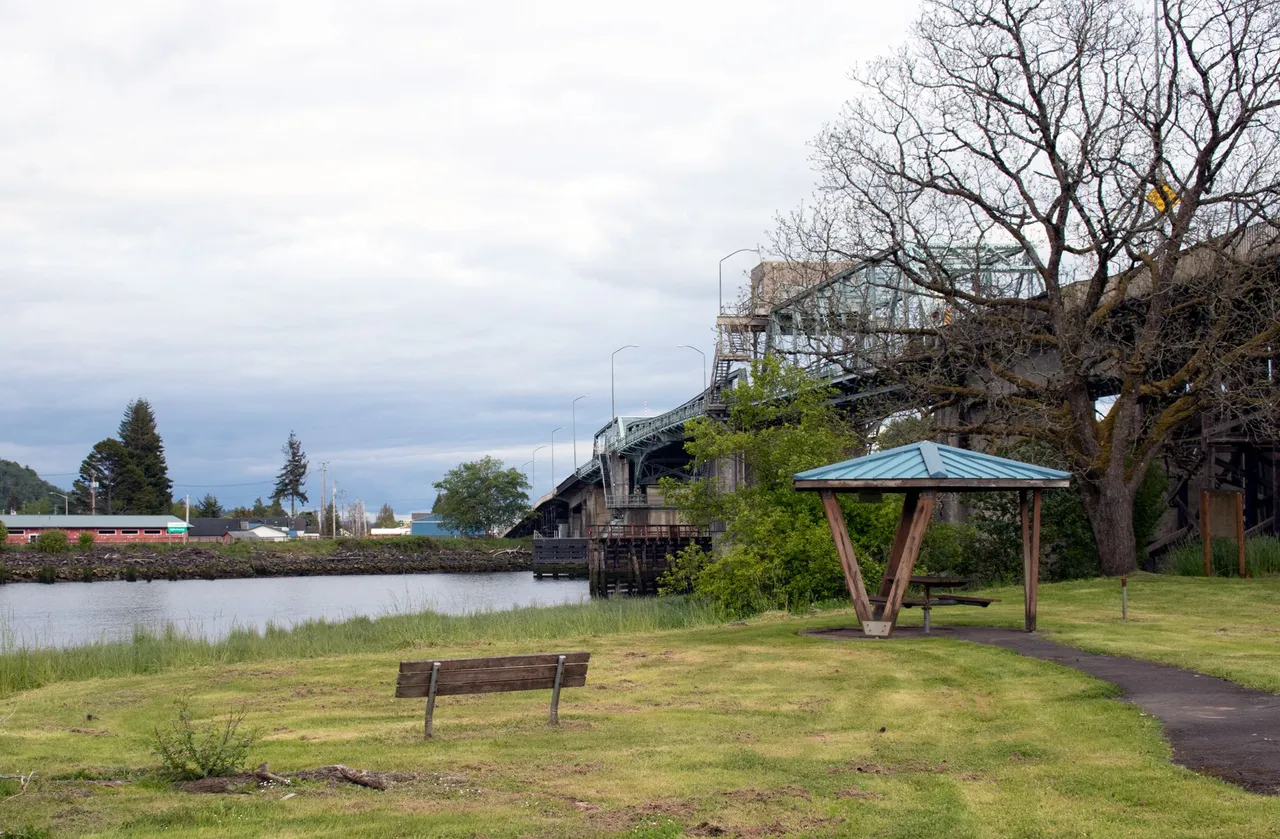
It would make a better shot if our parks department would fix the bench. Or maybe you didn't notice the missing seat?
After these first few warmup shots, I left the 'civilized' section of the riverbank (where there is a nice paved walk) and passed under the bridge into the wild. My objective was the Puget Sound & Pacific Railroad swing bridge near the mouth of the river, just yards from the Grays Harbor bay.
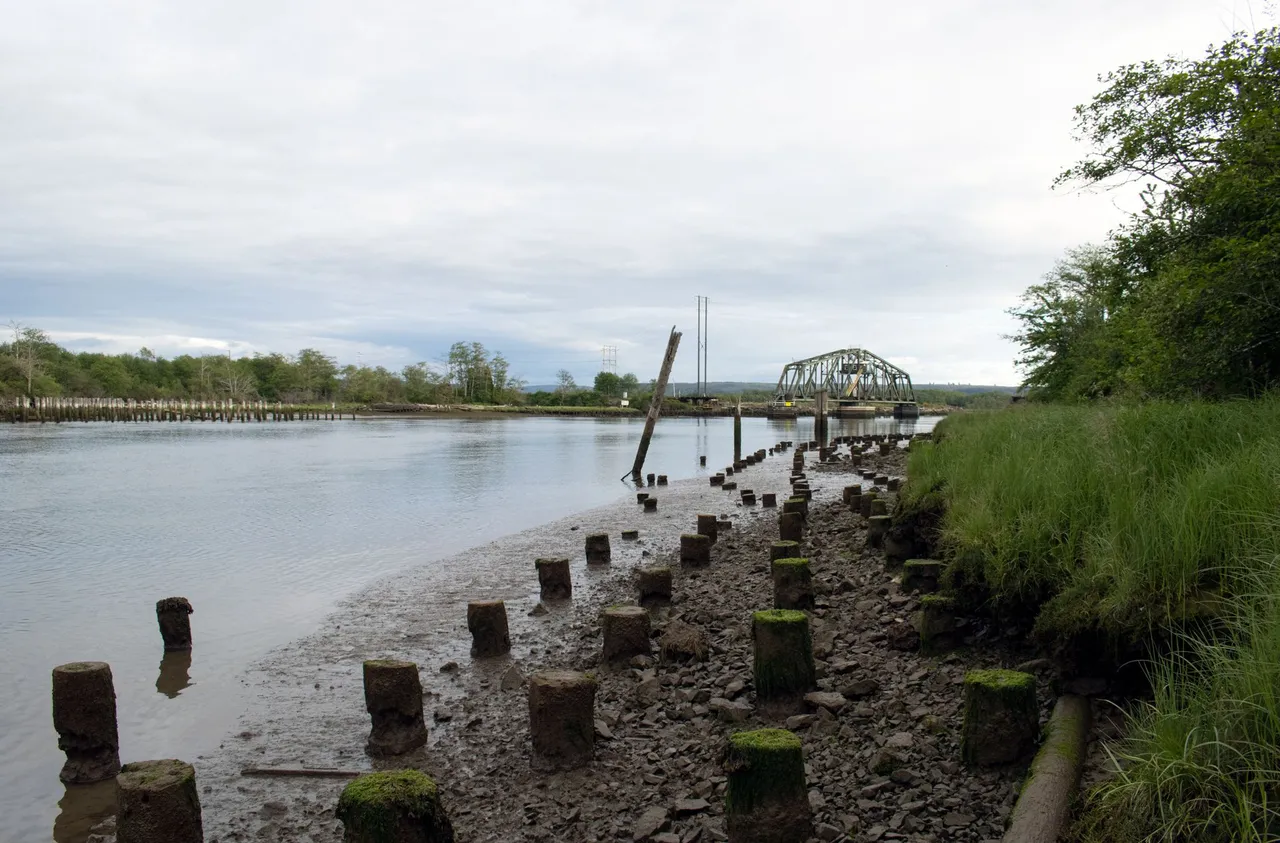
The tide had just gone out, so everything was still dripping wet and slicked over with a thin coating of mud.

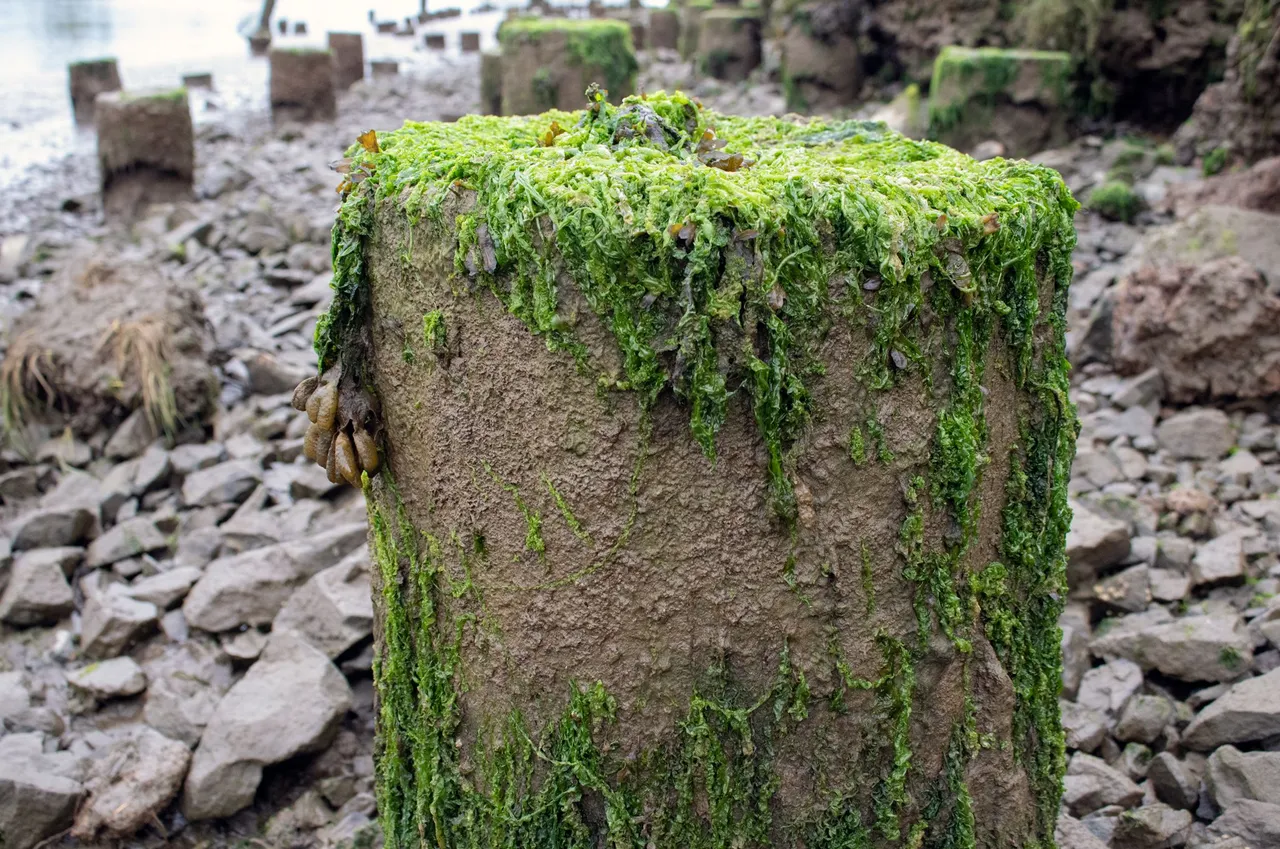
The mudflat between the rocks and the river was still a soup of mud and water. It firms up a little as the last of the water drains or evaporates when the tide is out.
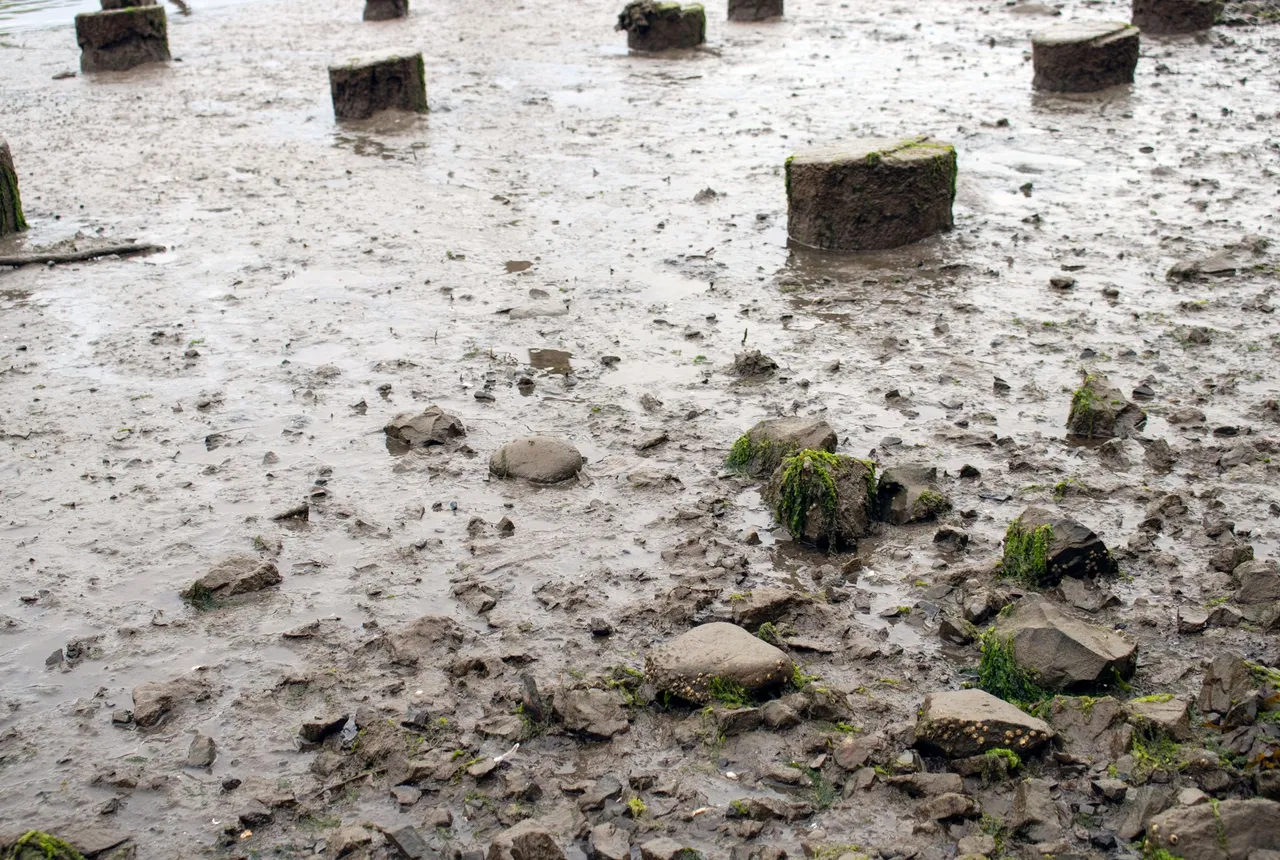

The next photo allows you to visualize how the swing bridge is used: it pivots on that central point to connect the rail line across the river. It is rarely used (there isn't much happening on the west side of the river, where I was walking; mostly the rail line on that side is used as a place to store extra cars), and the bridge's usual position is open, as you see here, to allow for river traffic. There are more boats than trains passing this point in a typical week.
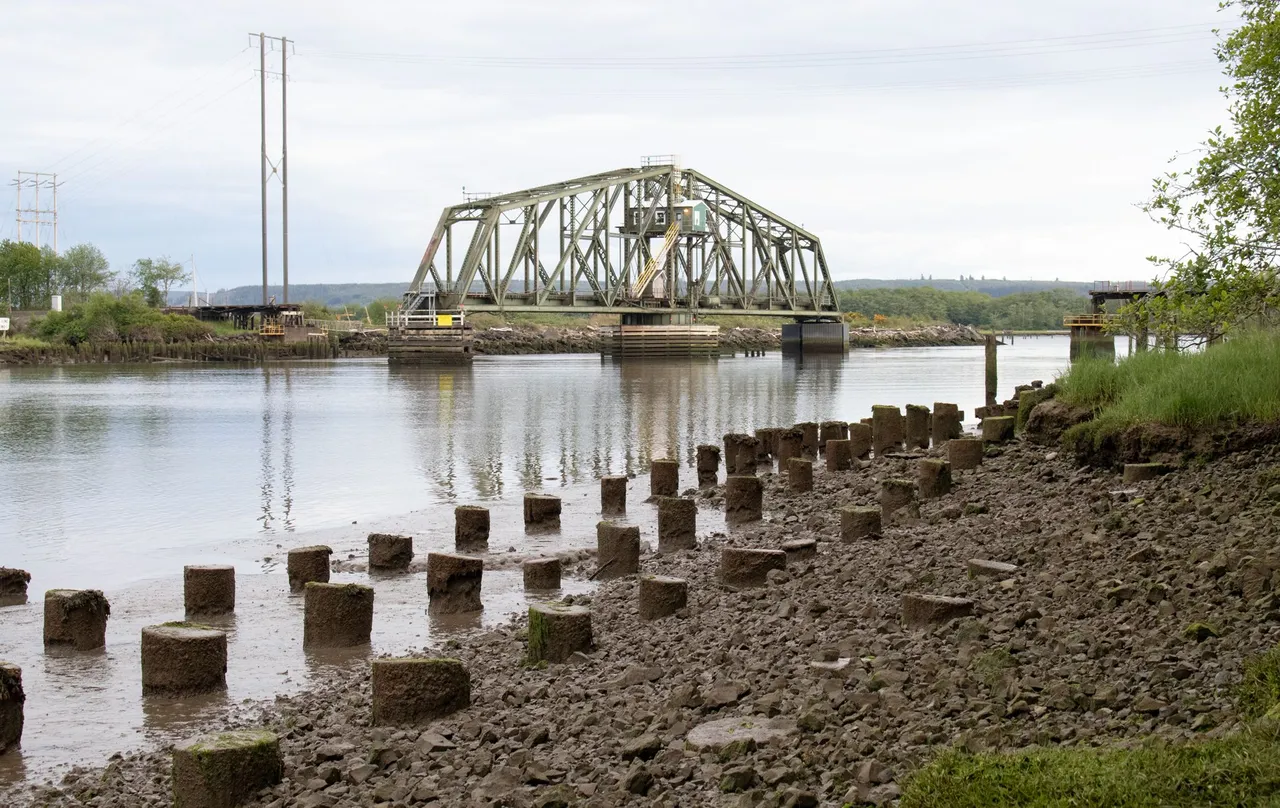
It's been awhile since I photographed the swing bridge. Last time, if I remember correctly, I used the dock pilings here as step stools to find different angles for the shot. This time I avoided that, for the most part, probably because they were so slick, and because I was interested in finding the best way to include them in the composition.
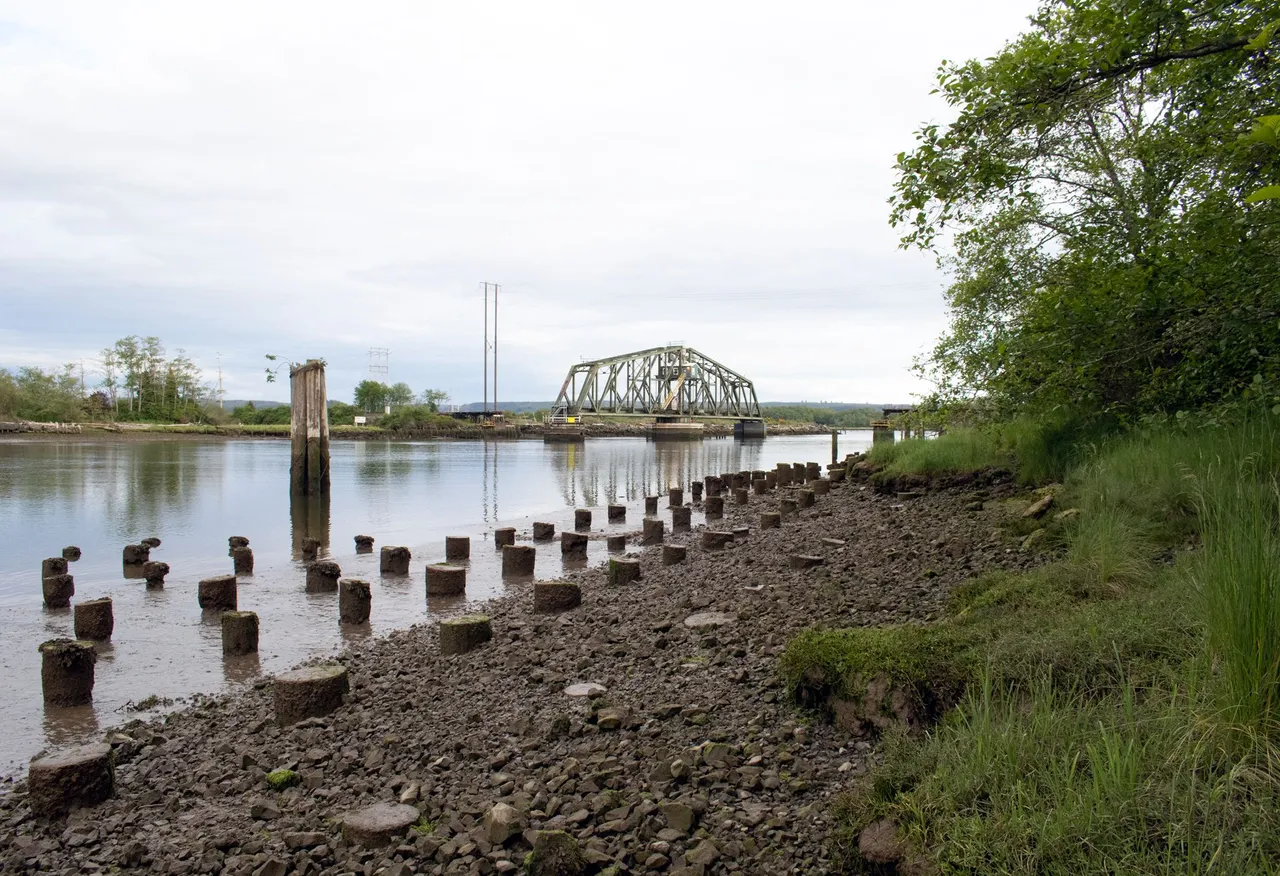
Below, they create leading lines that run parallel to the bridge and river and point to the horizon.
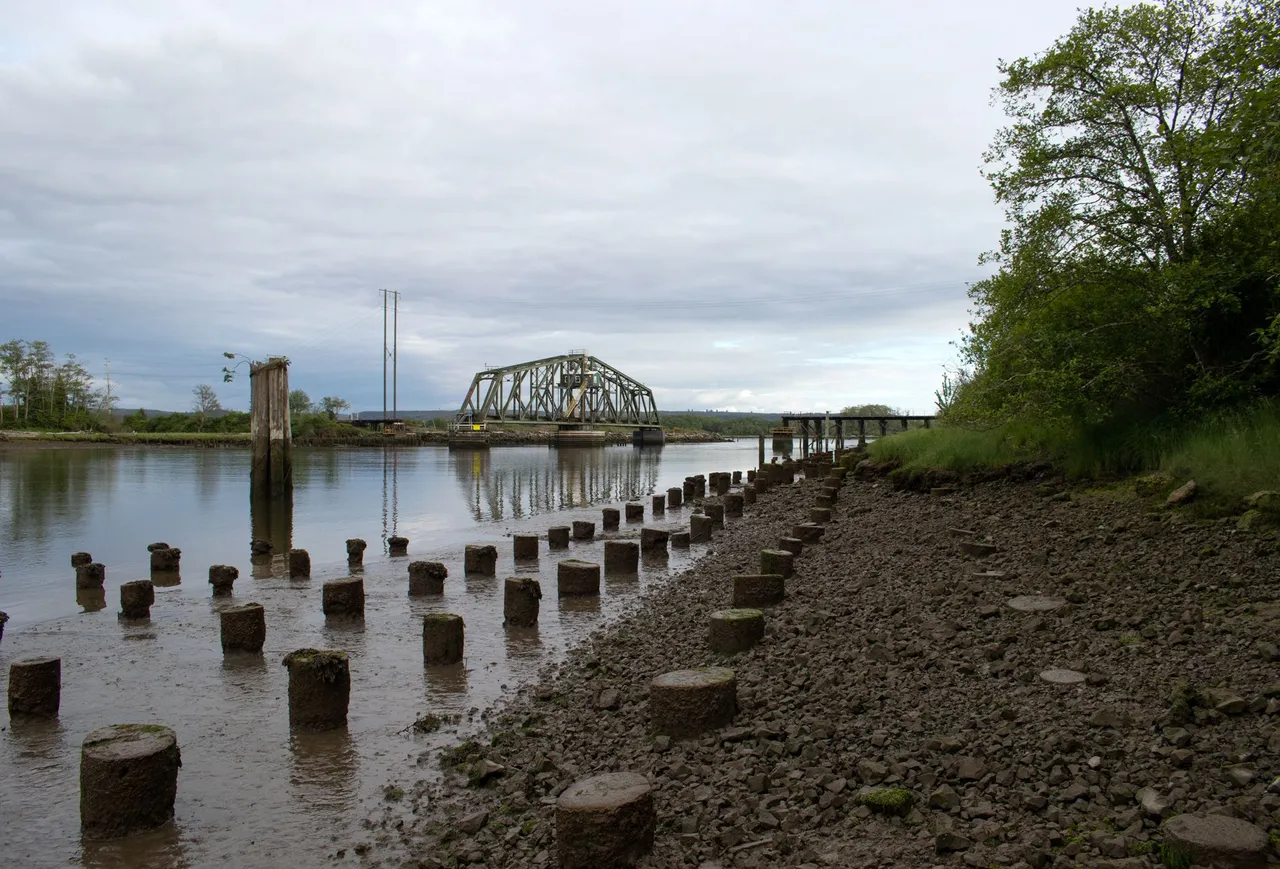
And here they look like soldiers in formation, lined up to watch a parade on the river.
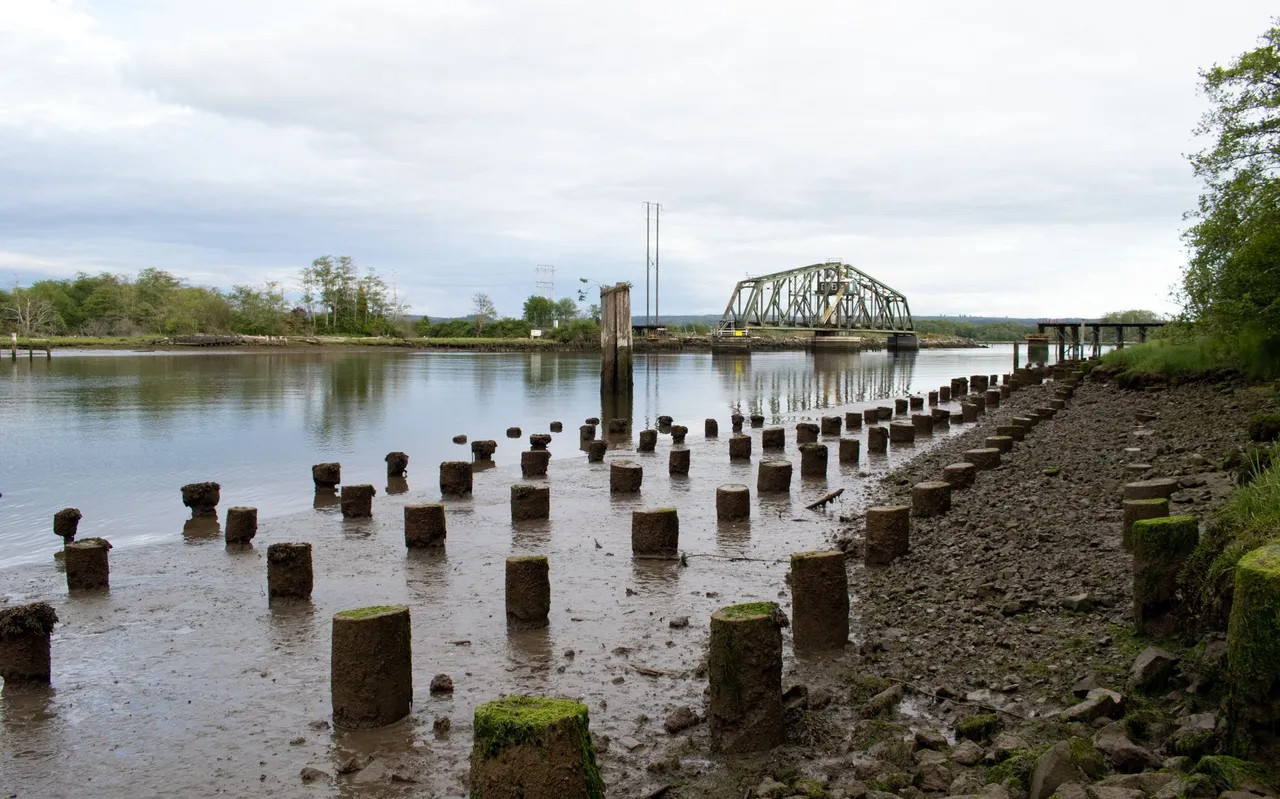
Admittedly, I'm including far too many shots of the swing bridge in this post (and there's more to come). I don't feel like I discovered the best composition in this outing; they're all an attempt at finding the shot.
Of course, there were other things to look at and photograph, like this group of dock pilings with a tree growing out of the top.
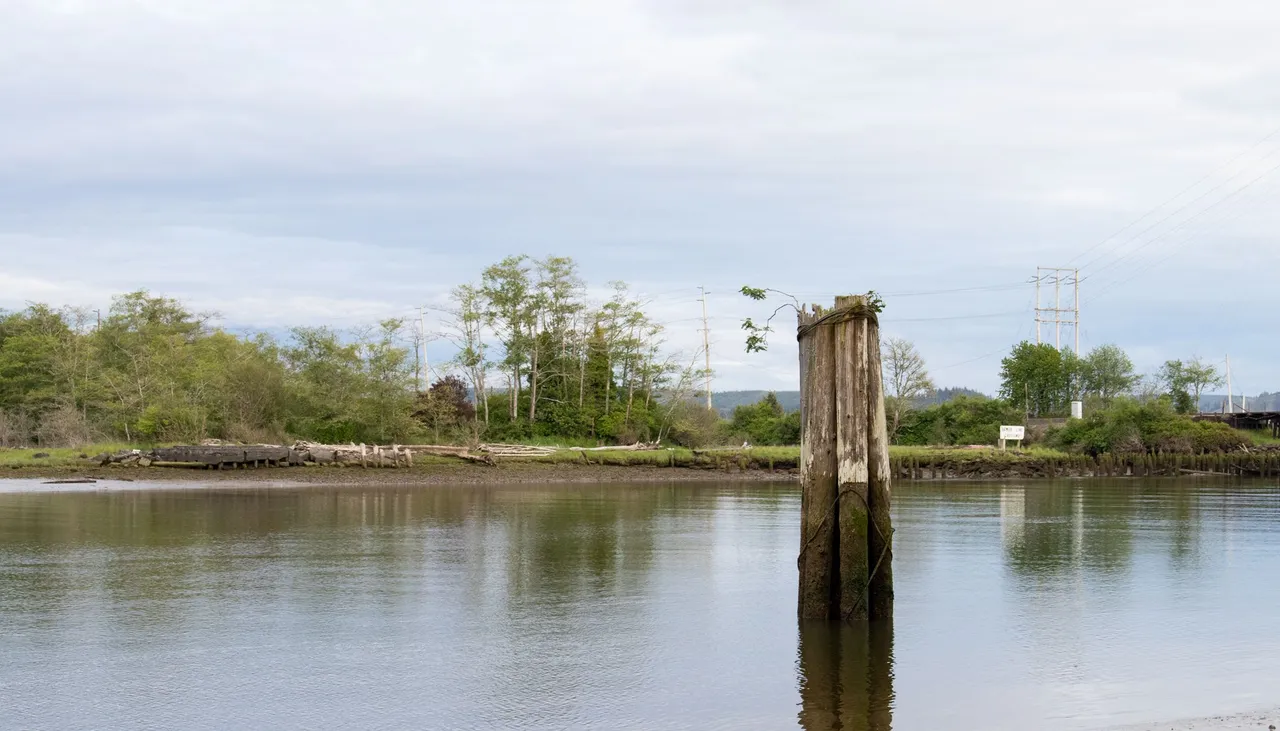
A tiny shorebird pecking for invertebrates in the mudflat.
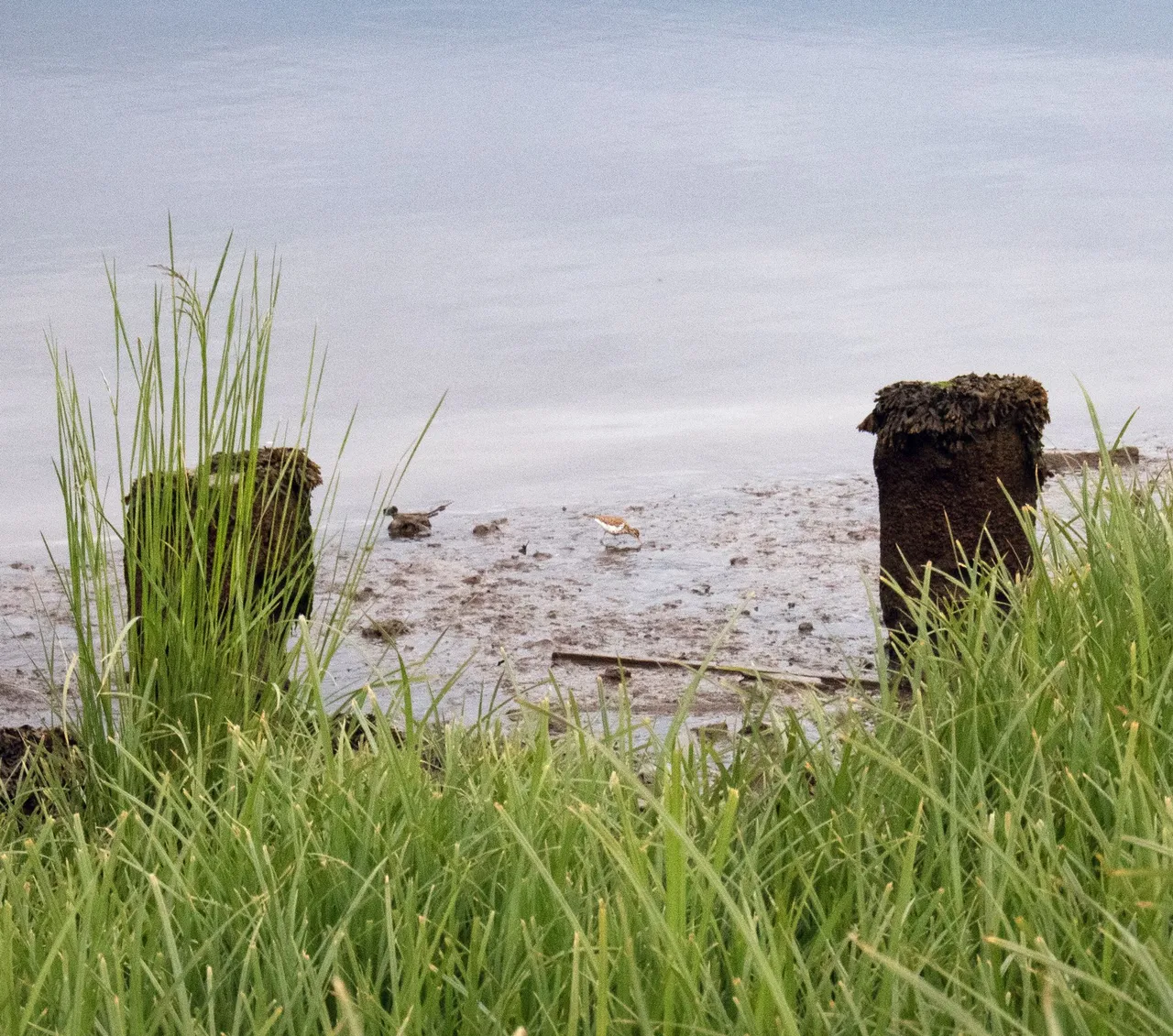
And this splash of yellow in the brambles atop the riverbank.
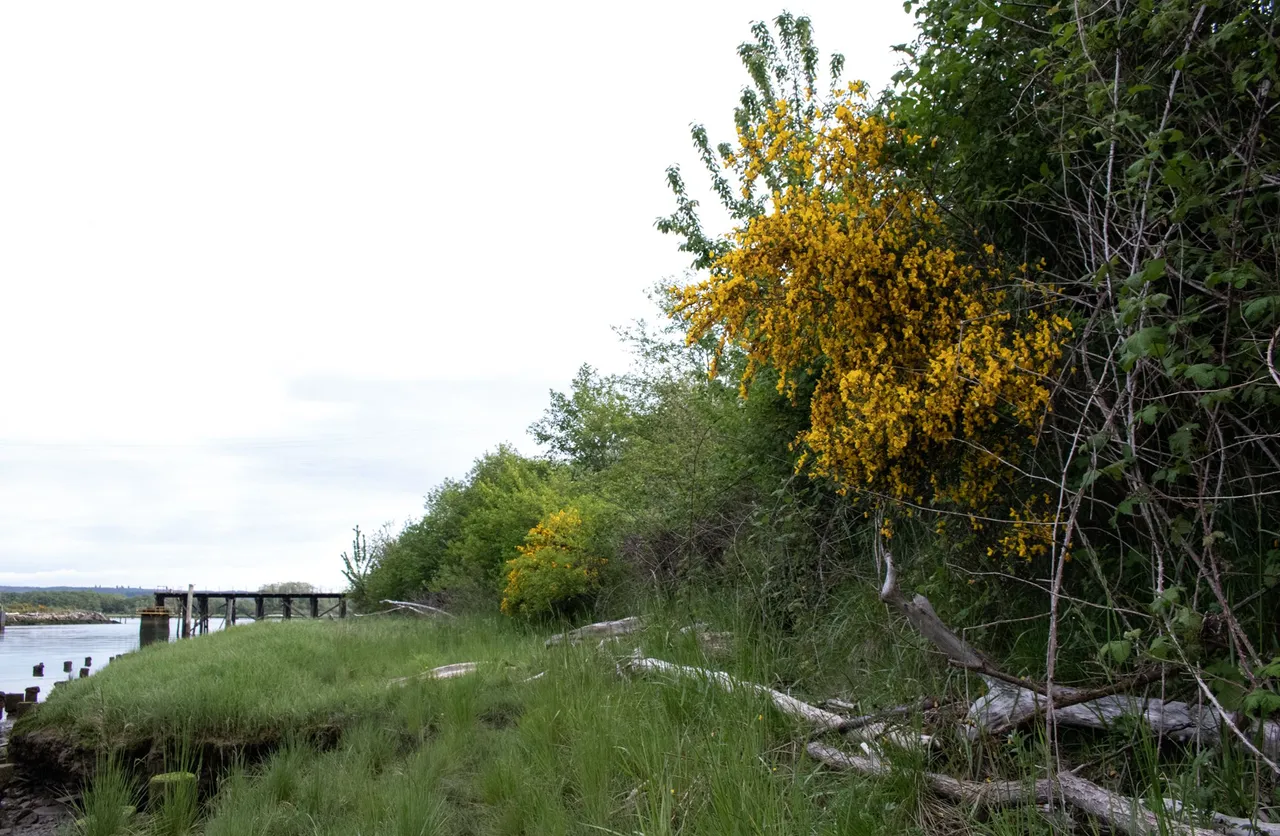
I soon returned to the bridge, however. The sky was changing; the clouds were breaking up to provide a dramatic backdrop.
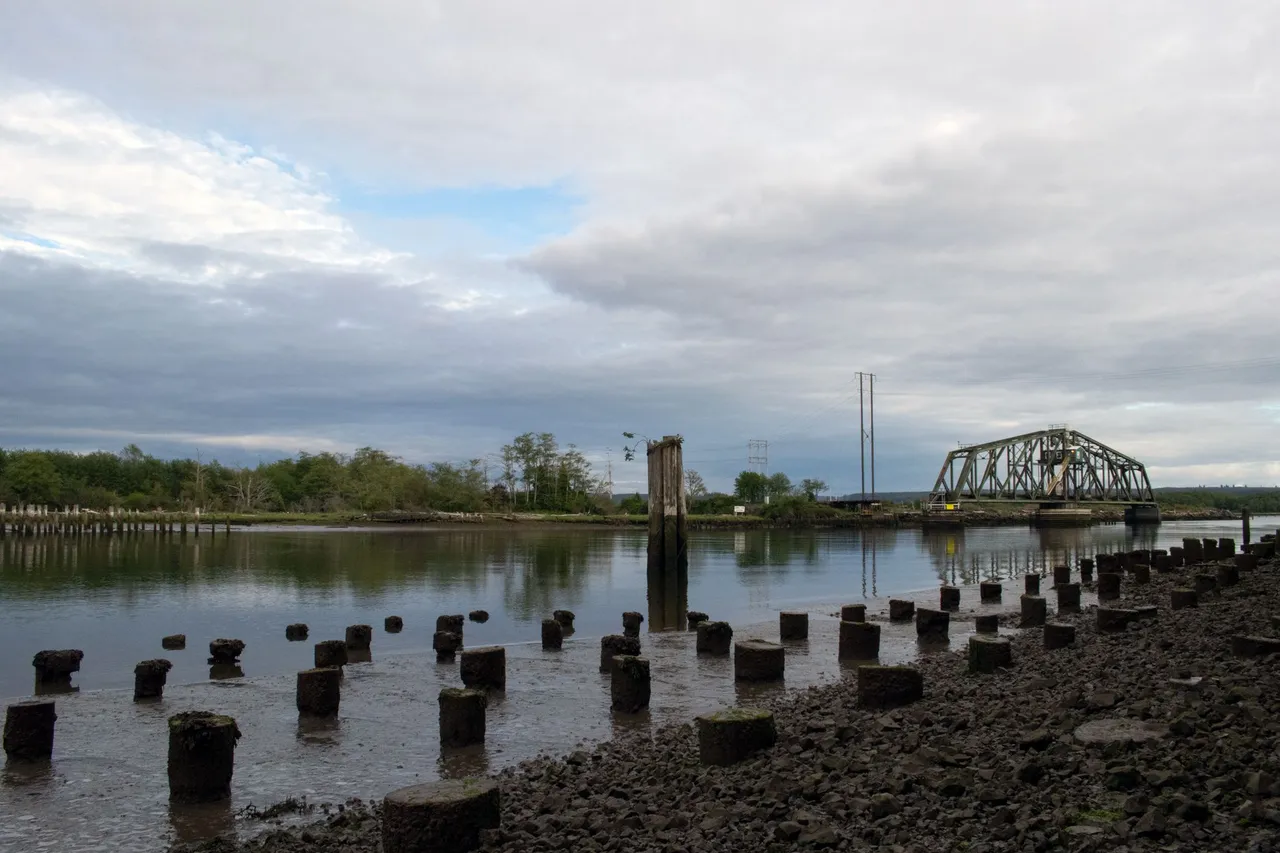
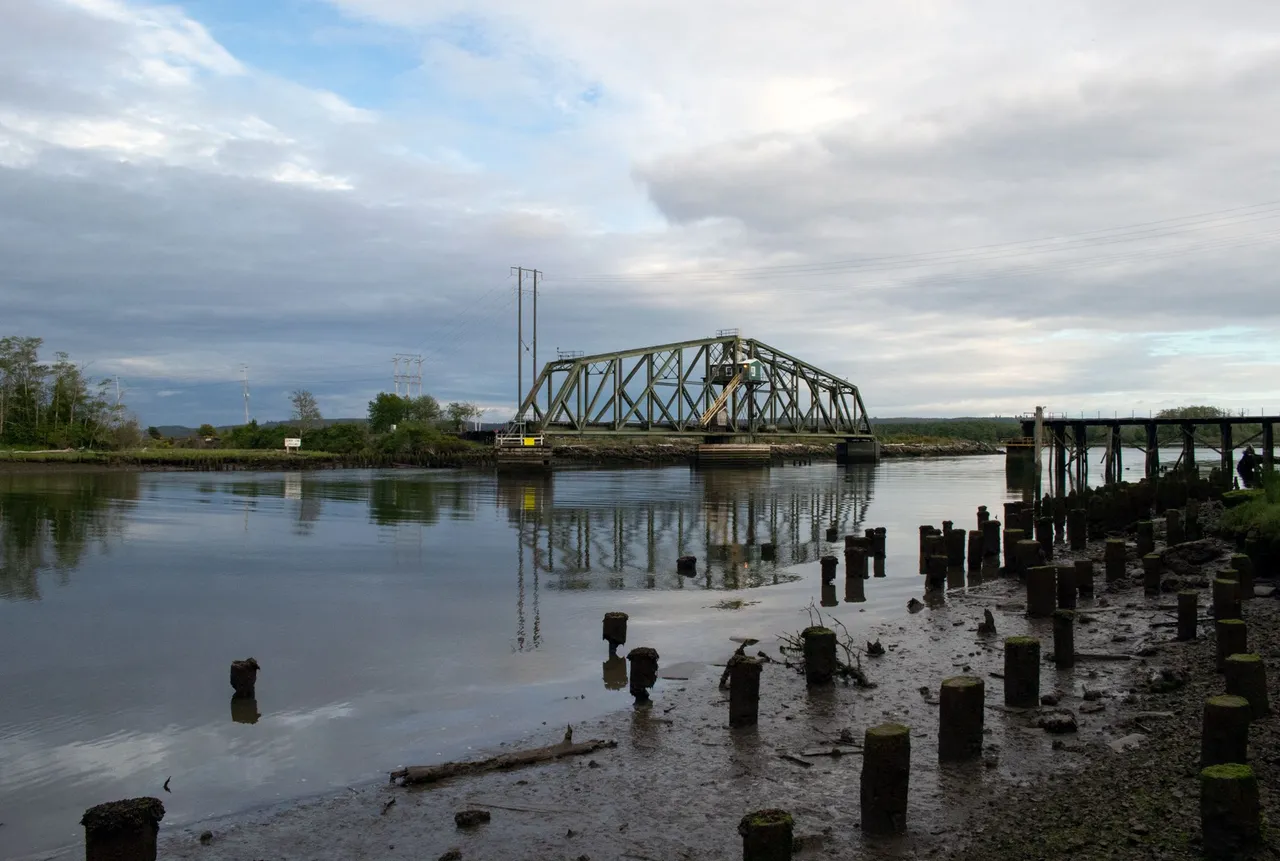
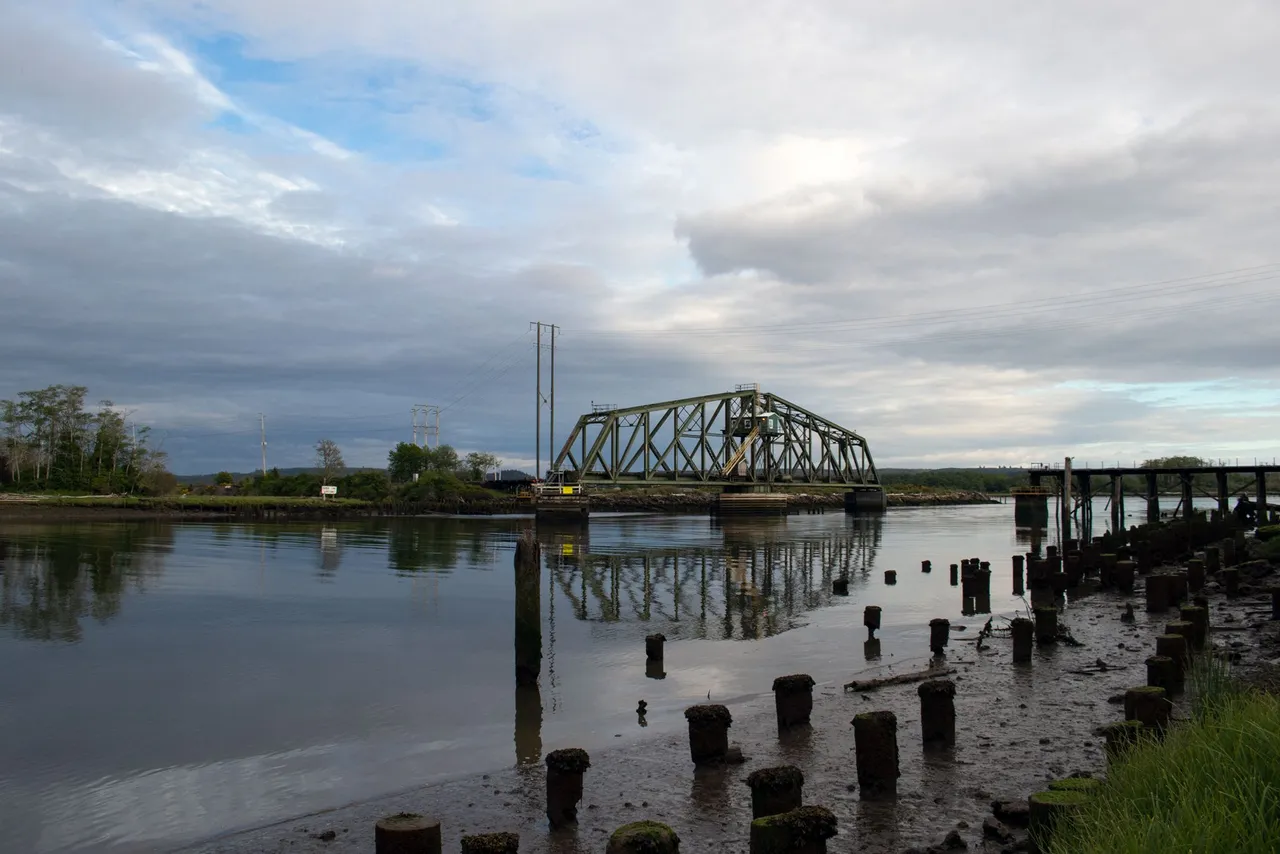
The clouds are an endless fount of new photographs: they can change the scene in a matter of minutes, let alone from day to day. The same is true of the ripples on the water, and the reflections cast by the constantly moving sun. Even when I figure out the perfect composition for the Hoquiam river scenes I return to over and over, I'm sure I'll never run out of opportunities for new and interesting photographs.
(And, as I'm writing this, it occurs to me that the idea of finding the 'perfect composition' for the same scene is probably suspect, given all those constantly shifting variables. There will always be something new to factor in.)
I continued downriver to get a closeup of the swing bridge, and as I did, the sun dipped below the clouds in the west and put a spotlight on it.
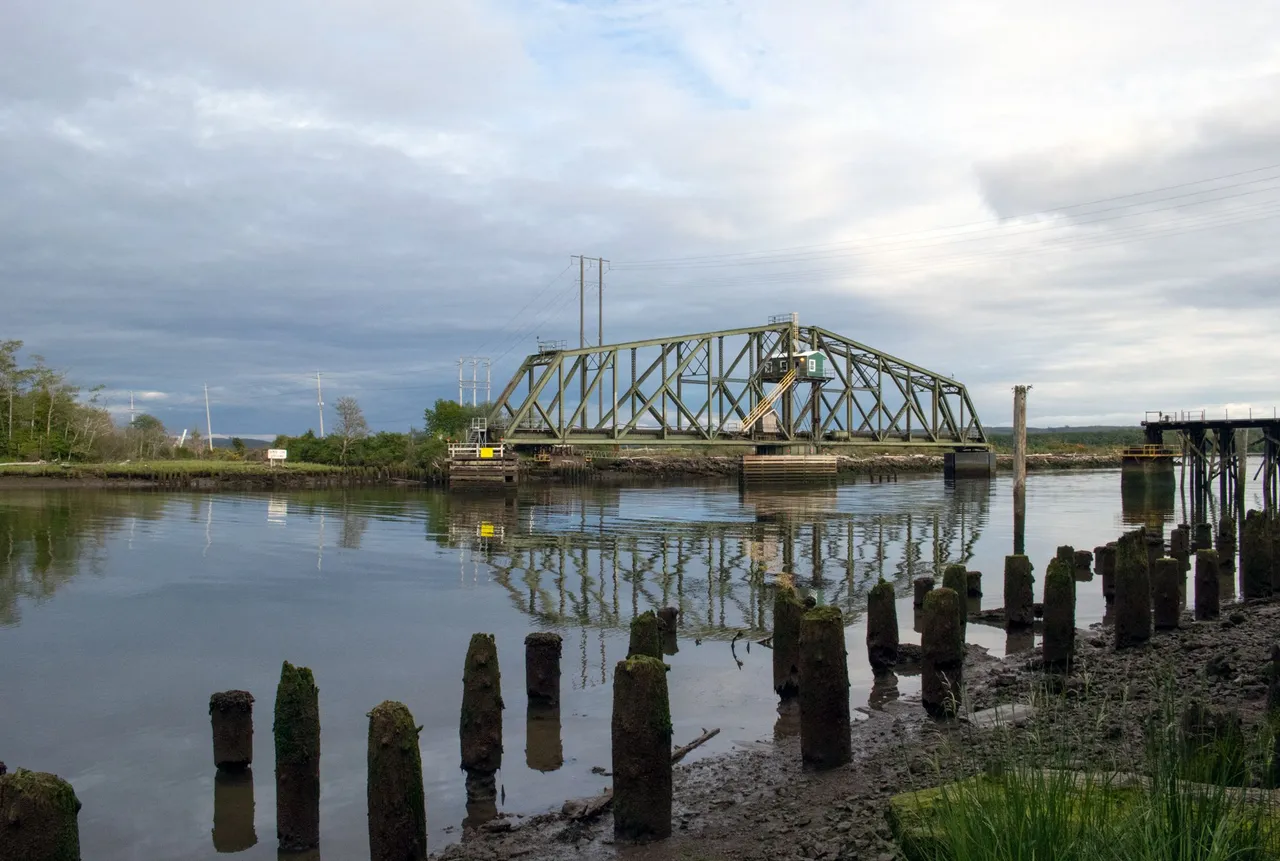
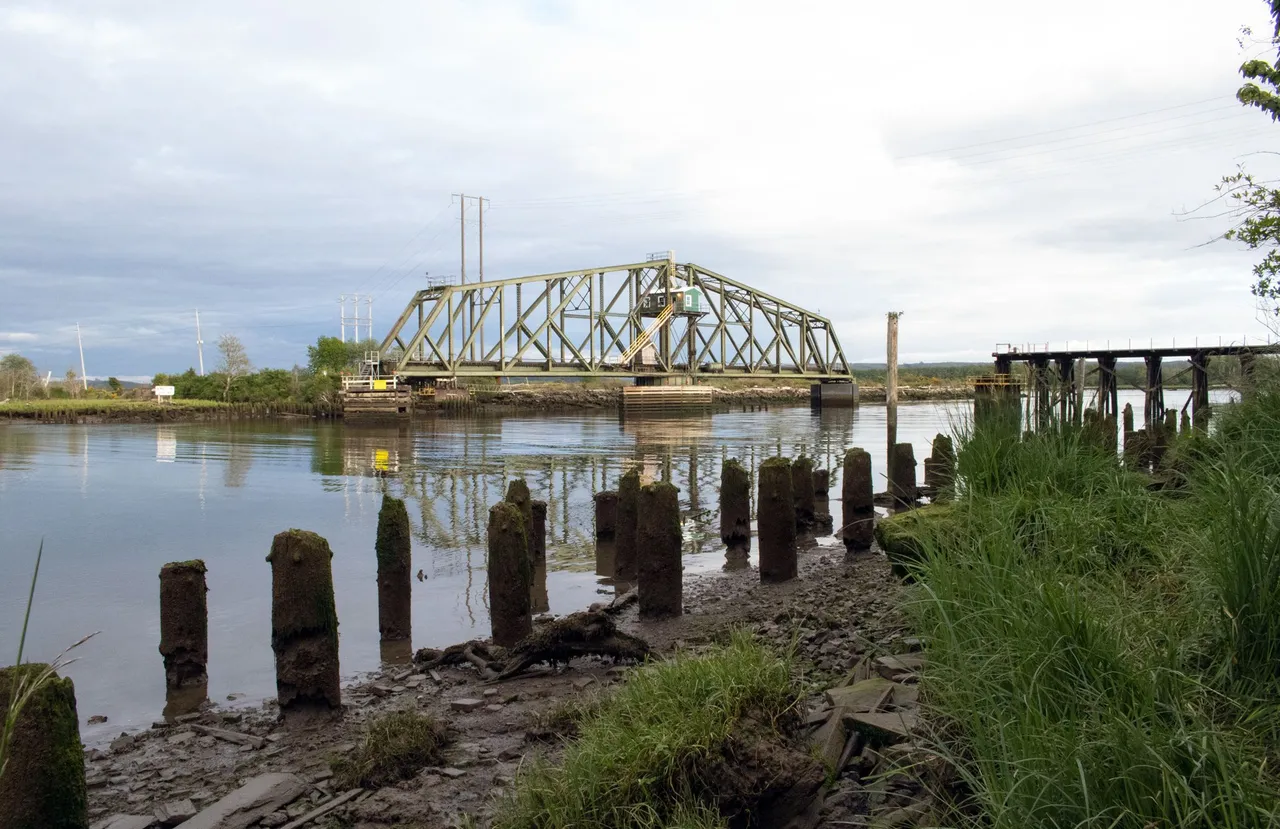
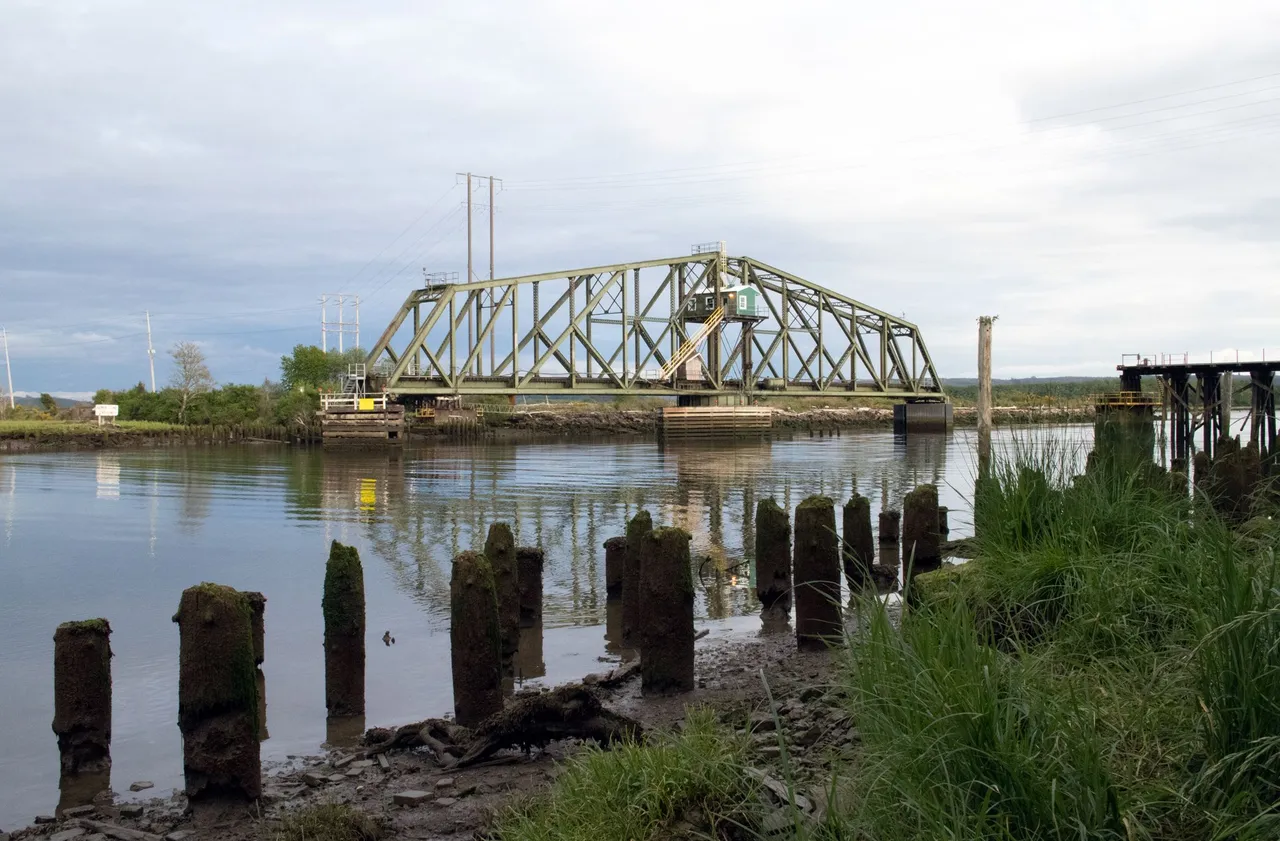
As the sun continued to brighten the bridge, I ducked down to take a final few shots from among the dock pilings.
Like the earlier Simpson Avenue Bridge photo, these next two were composed over time. I recently experimented with this angle in a spot about a mile from the swing bridge, looking out from a grouping of dock pilings at the Grays Harbor bay. I wanted to recreate the same effect, but with a view of the bridge.
Dock pilings line the waterways all around Hoquiam, so this new angle is one I can incorporate (when the tide is out!) in new photos of many of my favorite views around town.
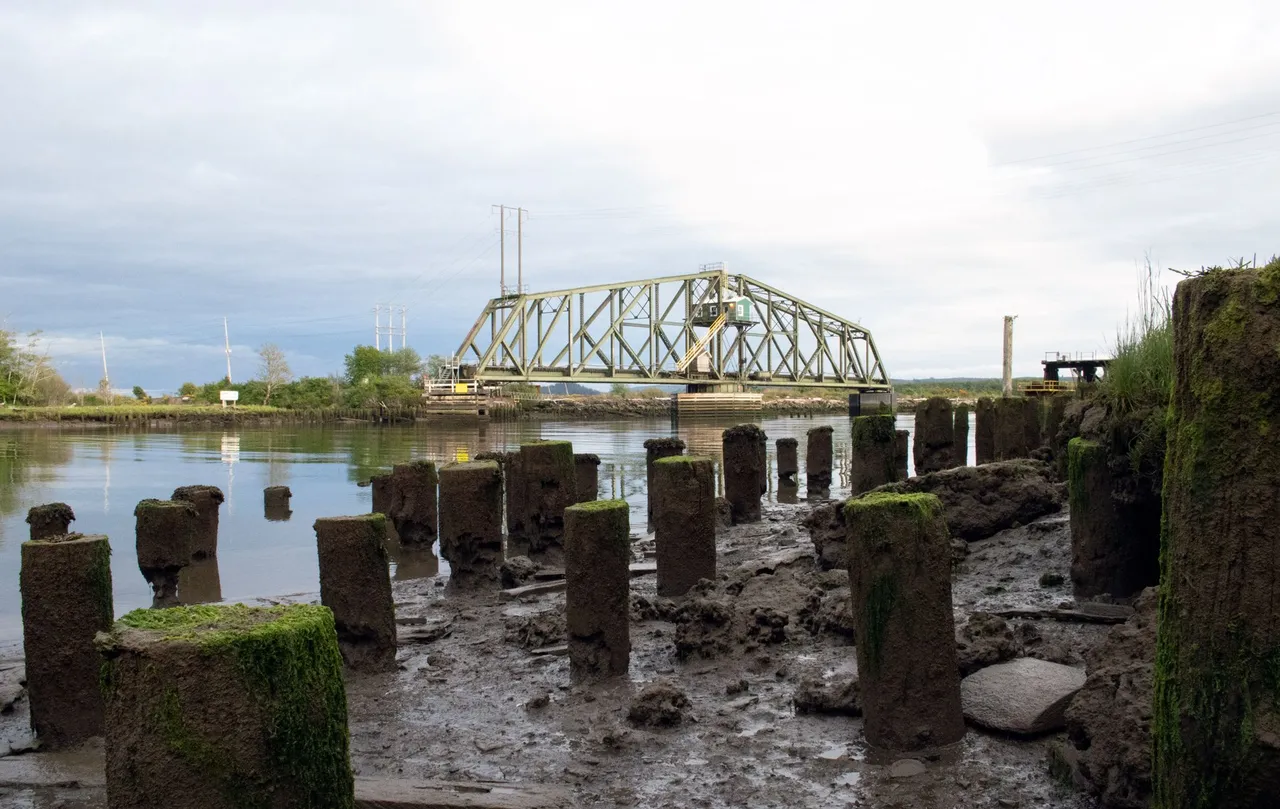
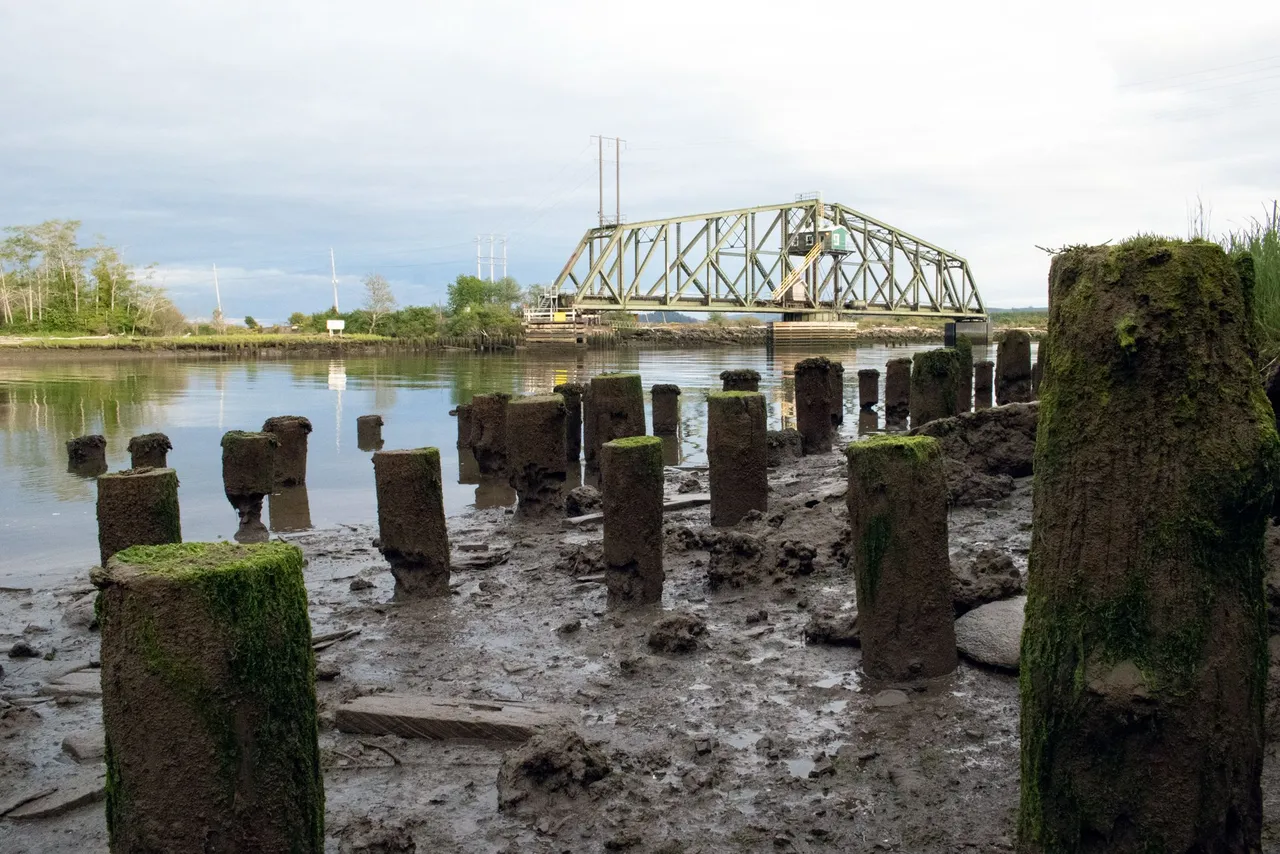
I headed back upriver then, to see if I could catch the sun highlighting the bridge from one of my earlier vantage points, but the clouds closed in again, so I decided to call it a night.
On the way back home, I took this shot from the wild side of the riverbank, looking under Simpson Avenue Bridge toward Hoquiam. Here you can see two of our hills: Beacon Hill on the right and College Hill to the left.
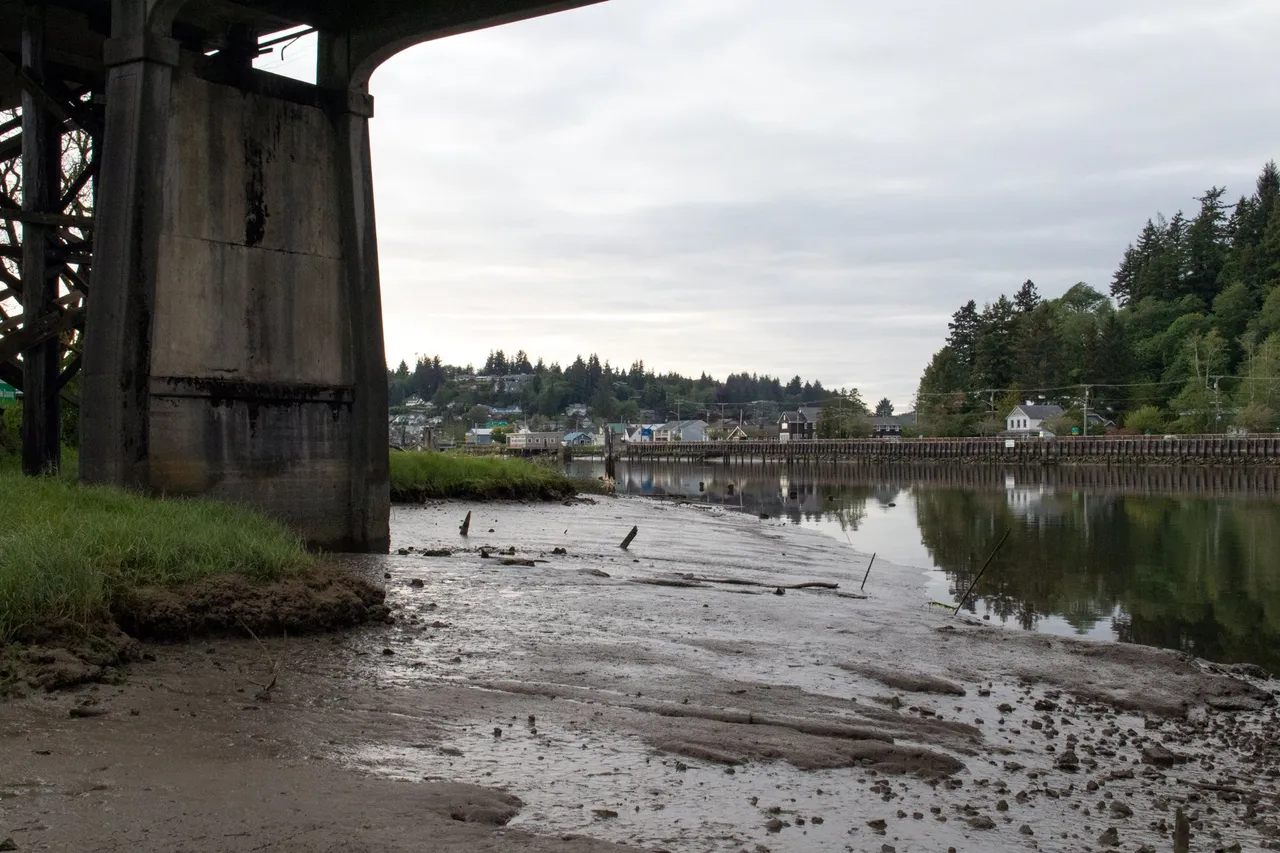
I've noticed, as I go out on more photowalks, that there is a particular feeling I get that tells me I'm done with the shoot.
Call it the sweet spot, I guess. It could be the one photo that makes me go "Yes, that's the one!" Or sometimes it's just a certain level of creative fulfillment.
I knew after this final shot taken alongside Simpson Avenue Bridge that I wasn't going to take a better one that night. It was a yes-that's-the-one moment, and I put the camera away as soon as I felt I had the shot.
